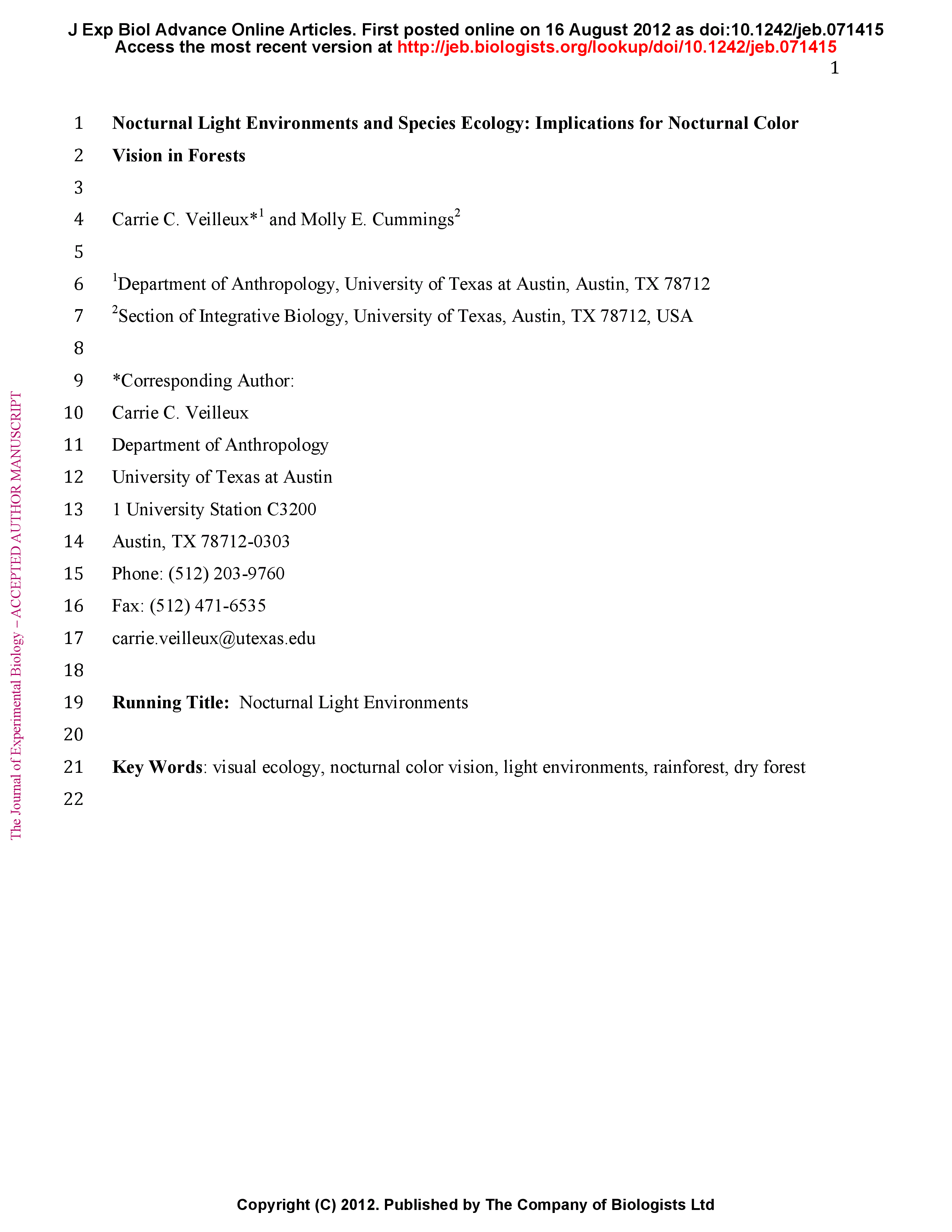Summary
While variation in the color of light in terrestrial diurnal and twilight environments has been well documented, relatively little work has examined the color of light in nocturnal habitats. Understanding the range and sources of variation in nocturnal light environments has important implications for nocturnal vision, particularly following recent discoveries of nocturnal color vision. In this study, we measured nocturnal irradiance in a dry forest/woodland and a rainforest in Madagascar over 34 nights. We found that a simple linear model including additive effects of lunar altitude, lunar phase and canopy openness successfully predicted total irradiance flux measurements across 242 clear sky measurements (r=0.85; p<0.0001). However, the relationship between these variables and spectral irradiance was more complex, as interactions between lunar altitude, lunar phase and canopy openness were also important predictors of spectral variation. Further, in contrast to diurnal conditions, nocturnal forests and woodlands share a yellow-green-dominant light environment with peak flux at 560 nm. To explore how nocturnal light environments influence nocturnal vision, we compared photoreceptor spectral tuning, habitat preference and diet in 32 nocturnal mammals. In many species, long-wavelength-sensitive cone spectral sensitivity matched the peak flux present in nocturnal forests and woodlands, suggesting a possible adaptation to maximize photon absorption at night. Further, controlling for phylogeny, we found that fruit/flower consumption significantly predicted short-wavelength-sensitive cone spectral tuning in nocturnal mammals (p=0.002). These results suggest that variation in nocturnal light environments and species ecology together influence cone spectral tuning and color vision in nocturnal mammals.








